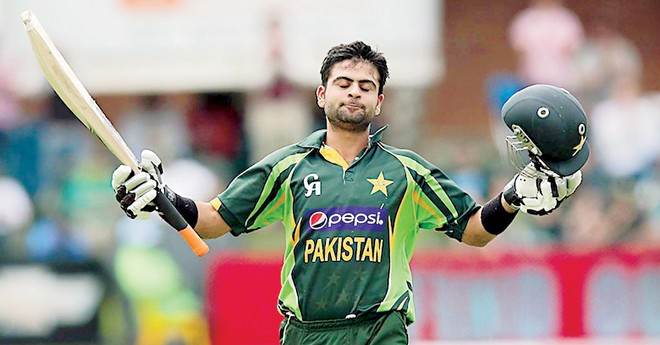

Pakistan cricket combines two of the worst things in Pakistani life - corruption and incompetence. It might sound like a sweeping statement but that’s been the case with our cricket for quite some time. Big money, big fame and other perks that go with the package have given rise to corruption at almost all levels. Incompetence being a national flaw affects cricket too, from top to bottom.
These two ills combine to form the root cause for most of Pakistan cricket’s problems both on the field and in the boardroom.
The stories of corruption in Pakistan cricket are well-known. From the Salim Malik saga to the public trial followed by punishment of Pakistan’s spot-fixing trio led by Salman Butt, Pakistan cricket has had more than its fair share of fixing scandals. But such scandals are just the tip of the iceberg. The rot for Pakistan cricket, when it comes to corruption, begins right from the very bottom.
It’s easy to bribe regional selectors to buy a place in a team or grease the palms of an umpire to have him on your side in a must-win domestic game. This is not inside information but common knowledge, especially if you are associated with Pakistan cricket in one way or the other.
Just like corruption, incompetence is also a menace that has been dogging Pakistan cricket. Just like corruption, incompetence is deep-seated in the very fabric of Pakistan cricket. It’s not just the Pakistan Cricket Board (PCB) that’s infested with officials ill-equipped for the job. Lack of professionalism hurts Pakistan cricket at lower levels.
And it shows.
It shows in the national team’s inconsistency. It shows in the poor decision-making of our cricket chiefs. It shows in the clear lack of foresight in the PCB. It shows in the crumbling state of our domestic cricket.
Recently, reports have suggested that the PCB is considering the idea of appointing Ahmed Shehzad as Pakistan’s Twenty20 captain. The position of T20 skipper was left vacant earlier this month when Mohammad Hafeez stepped down after Pakistan failed to reach the ICC World Twenty20 semi-finals in Bangladesh.
I was surprised and after thinking about it for a moment rejected the news as mere speculation. But that same day I had a chat with a well-placed source in the PCB and was told that the report had some weight. I double-checked it with a senior national player and he confirmed it.
I have been following Ahmed Shehzad’s career since the time when he was making his bones as a junior player. Like many others, I was, and still am, impressed by his aggressive stroke-play.
But give me a break. Ahmed is a careless 22-year-old who is yet to even fortify his place in the national team in any format of the game.
His supporters draw comparisons with Virat Kohli, the super-prolific 25-year-old, who has emerged as a perfect successor to MS Dhoni. Ahmed does resemble Kohli both in looks and aggressive style of batting. But that’s where the similarities end.
Kohli is India’s Mr Consistent and has won them many a matches across the three formats. Ahmed has also been a match-winner but his successes are few and far between especially if you compare his stats with that of the Indian star.
Kohli has proved himself to be leadership material, having guided the Indians to the Under-19 World Cup title in 2008. Ahmed’s credentials are far inferior in that area as well.
I’m not saying that Ahmed cannot become Pakistan’s captain. He can do it provided the youngster brings consistency in his batting and improves his attitude. Aggression is good in a leader when it’s calculated otherwise it can become a burden.
The idea of giving the reigns of the national team in the hands of a brash young man with a history disciplinary blemishes during what is still a brief career underlines fears that Pakistan cricket has gone bankrupt in every way.
This kind of bankruptcy, when you have to start looking towards daredevil kids when searching for stable leadership, is even worse than dwindling bank accounts. It is easier for the board to fill its coffers than to raise high-quality cricketers, who can also be reliable captains.
It’s not that Pakistan haven’t enjoyed the luxury of successful captains even in recent times. We had Younis Khan, who guided Pakistan to a title-winning triumph in the 2009 World Twenty20 championship in England. But how did we treat him? He was forced to quit soon after that memorable victory.
Our cricket chiefs have mostly got it wrong when appointing captains. They went for Shoaib Malik after the 2007 World Cup debacle and opted for Mohammad Hafeez when a decision had to be made to groom a long-term skipper. Both of them are technically weak and were thus doomed to fail in the long run. But our cricket chiefs, masters of poor decision-making, lacked the wisdom to see those flaws. We could be repeating the same mistake with Ahmed Shehzad.
Like Bruce Willis in the Die Hard series, Pakistan cricket seems always to be hurling towards triumph or disaster. But there is a difference. In the end Willis always prevails despite all odds. Unfortunately that has not been the case when it comes to Pakistan cricket.